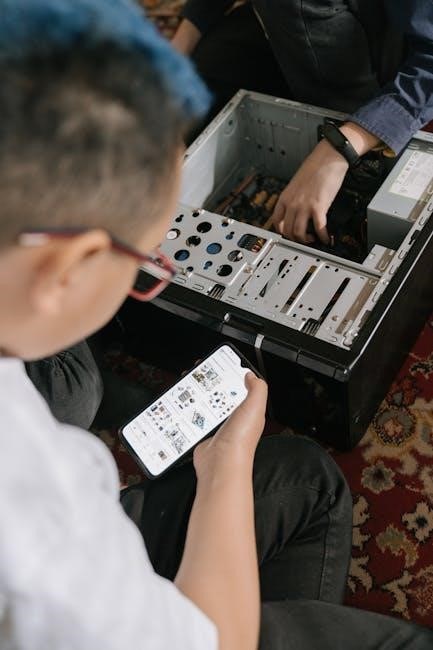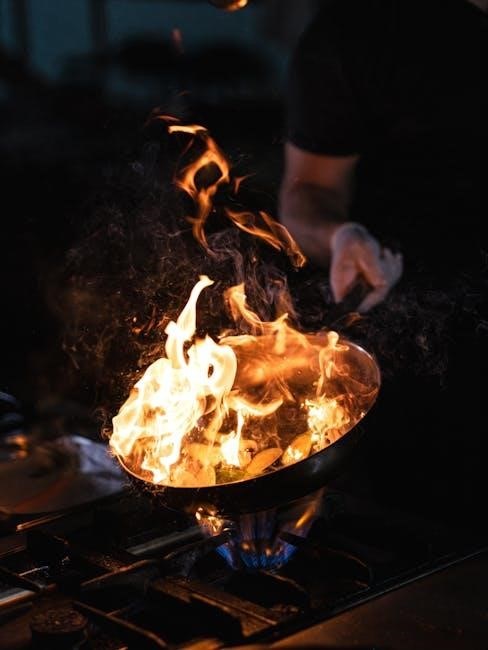Troubleshooting pellet stoves requires knowledge of components and features, multiple problems can occur, but identifying issues is possible with a guide, helping to fix common problems and issues, using online resources and manufacturer’s manuals effectively always.
Understanding the Importance of Troubleshooting

Troubleshooting is a crucial aspect of pellet stove maintenance, as it helps to identify and resolve issues promptly, ensuring the stove operates efficiently and safely. A well-maintained pellet stove provides reliable heat, reduces the risk of accidents, and minimizes environmental impact. Regular troubleshooting also helps to extend the lifespan of the stove, reducing the need for costly repairs or replacements. By understanding the importance of troubleshooting, users can take proactive steps to maintain their pellet stove, preventing minor issues from escalating into major problems. Effective troubleshooting requires a combination of technical knowledge, attention to detail, and patience. It involves analyzing symptoms, identifying potential causes, and implementing solutions. By mastering the art of troubleshooting, pellet stove owners can enjoy a warm, comfortable, and safe heating experience, while also reducing their environmental footprint and saving money on energy bills. Proper troubleshooting techniques can be learned through online resources, manufacturer’s manuals, and hands-on experience, making it an essential skill for any pellet stove owner.

Common Problems and Solutions
Pellet stoves can experience issues like ignition failures, poor burn quality, and auger jams, requiring solutions like cleaning, lubrication, and replacement of worn parts, using online guides and manuals for effective troubleshooting always.
Ignition Sequence and Burn Quality Issues
The ignition sequence is a critical process in pellet stoves, and issues can arise if it is not functioning properly. Burn quality issues can also occur, resulting in poor heat output and increased emissions; To troubleshoot these issues, it is essential to understand the ignition sequence and burn quality requirements of the pellet stove.
During the ignition sequence, the pellet stove goes through a series of steps to ignite the pellets and establish a consistent flame. If any of these steps are not completed correctly, the ignition sequence can fail, resulting in poor burn quality or no heat output at all. Common issues that can affect the ignition sequence include faulty igniters, incorrect pellet quality, and blockages in the combustion chamber.
To resolve burn quality issues, it is crucial to ensure that the pellet stove is properly maintained, and the combustion chamber is clean and free of debris. Regular cleaning and inspection of the pellet stove can help identify potential issues before they become major problems, and online resources and manufacturer’s manuals can provide guidance on troubleshooting and maintenance.

Troubleshooting Guides and Resources
Online resources and manufacturer’s manuals provide troubleshooting guides and helpful information always available online easily.
Manufacturer’s Manuals and Online Resources
Manufacturer’s manuals and online resources are essential tools for troubleshooting pellet stoves, providing detailed information on components, features, and common issues; These resources can be found on the manufacturer’s website or through online search engines. By consulting the manual or online guides, users can identify potential problems and find step-by-step instructions for repair. Additionally, online forums and communities can provide valuable insights and advice from experienced users and professionals. Many manufacturers also offer troubleshooting guides and FAQs on their websites, which can help users resolve common issues quickly and easily. Furthermore, online resources can provide access to repair manuals, parts lists, and technical specifications, making it easier to diagnose and fix problems. Overall, manufacturer’s manuals and online resources are indispensable for anyone looking to troubleshoot and maintain their pellet stove, and can help ensure safe and efficient operation. Regularly consulting these resources can also help prevent problems from occurring in the future.

Advanced Troubleshooting Techniques
Advanced techniques involve regular maintenance, lubrication, and cleaning of components, ensuring optimal performance and efficiency of the pellet stove, using specialized tools and equipment, always following safety guidelines and manufacturer’s instructions carefully.
Regular Maintenance and Lubrication
Regular maintenance and lubrication are crucial for the optimal performance and longevity of a pellet stove. This involves checking and cleaning the exhaust fan, combustion chamber, and heat exchanger, as well as lubricating moving parts such as augers and motors. By following a regular maintenance schedule, homeowners can help prevent common issues such as poor burn quality, ignition problems, and reduced heat output. It is also important to refer to the manufacturer’s manual for guidance on the appropriate lubrication process and maintenance procedures. Additionally, using the correct type and amount of lubricant can help prevent damage to the stove’s components and ensure safe operation. Regular maintenance can also help identify potential problems before they become major issues, reducing the need for costly repairs and minimizing downtime. By prioritizing regular maintenance and lubrication, homeowners can enjoy a safe, efficient, and reliable heating experience with their pellet stove. Proper maintenance can also help extend the lifespan of the stove and its components, saving money and reducing waste. Regular checks and maintenance can be done by the homeowner or a professional, depending on the complexity of the stove and the individual’s level of comfort with maintenance tasks.
